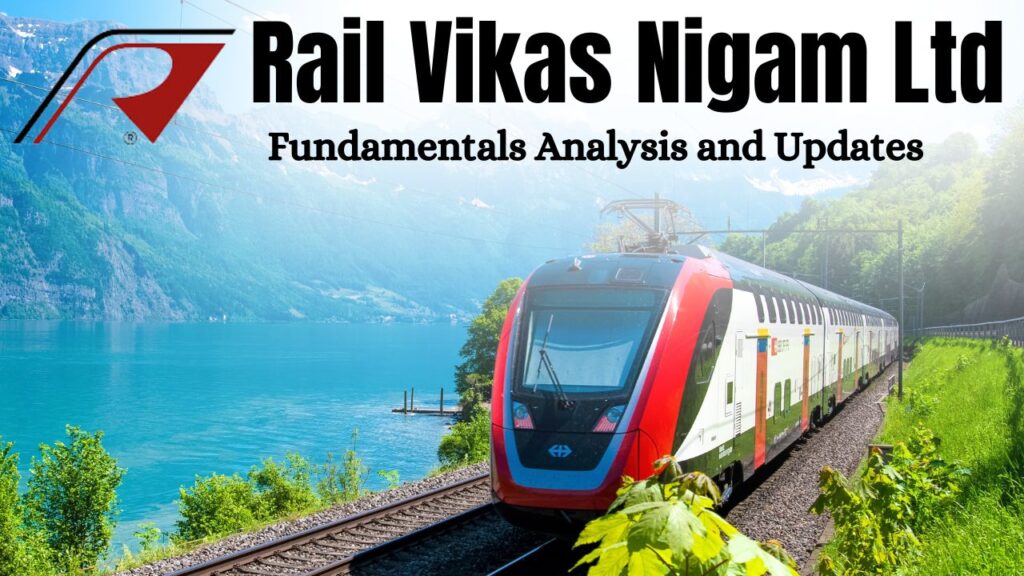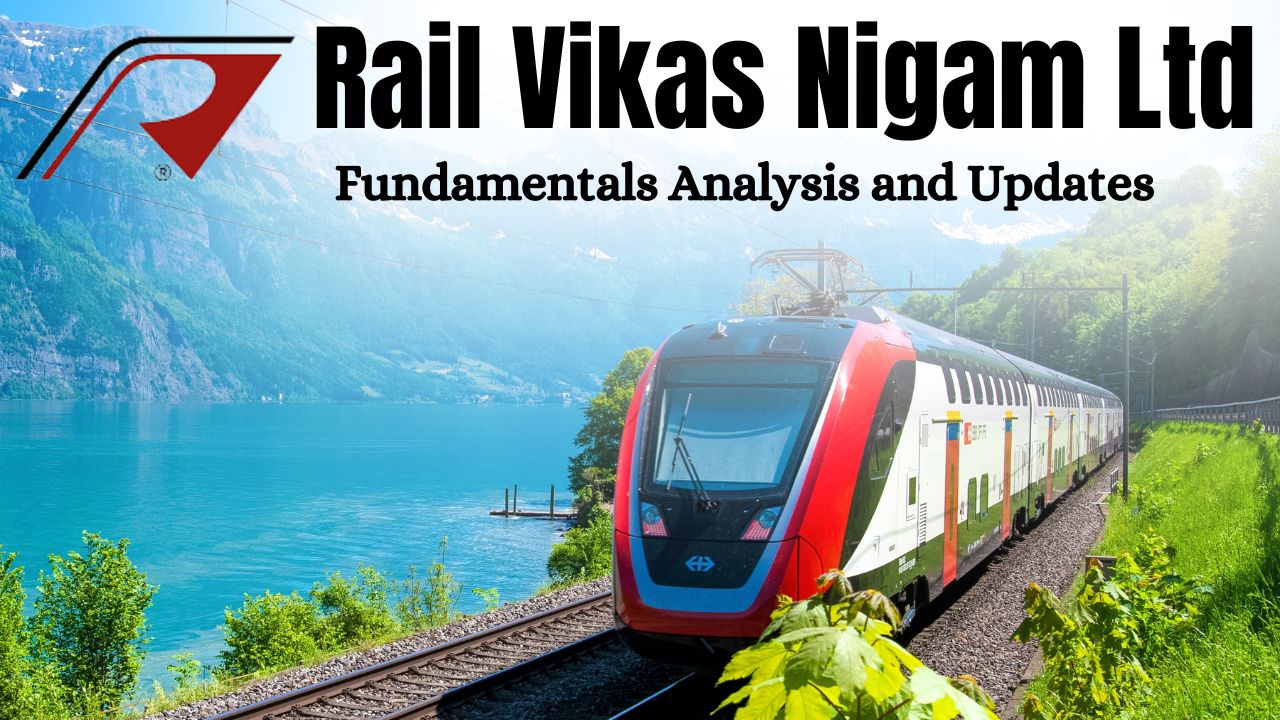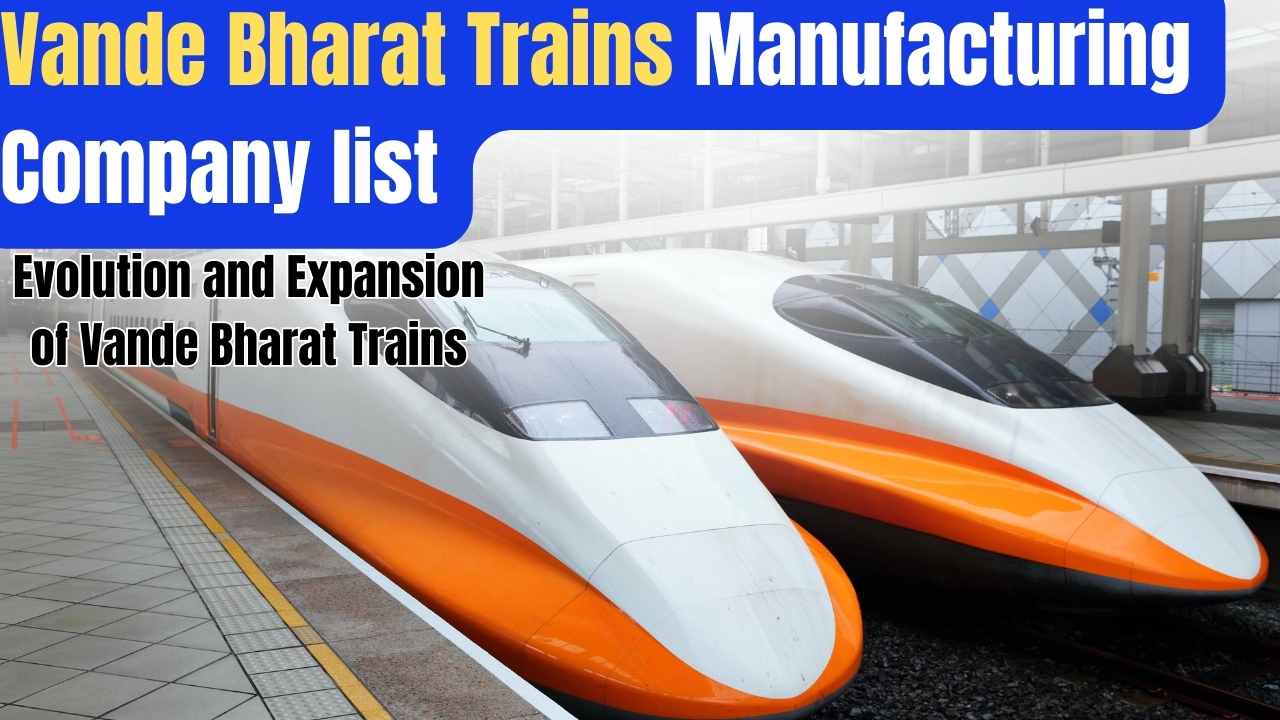Fundamentals Analysis of Rail Vikas Nigam Ltd (RVNL)
Rail Vikas Nigam Ltd (RVNL) is a government-owned company in India, established in 2003 under the Ministry of Railways. Its primary purpose is to implement rail infrastructure projects, including the construction of new lines, gauge conversion, doubling of tracks, and electrification. RVNL plays a crucial role in enhancing the railway network to meet the growing demands of transportation and improve efficiency. The company collaborates with various stakeholders, including other public sector undertakings, to execute projects efficiently. RVNL has significantly contributed to the modernization and expansion of India’s railway infrastructure, supporting economic growth and connectivity.

Objectives and Functions
The primary objectives of RVNL include:
- Project Implementation: RVNL is tasked with the execution of projects related to the creation and augmentation of rail infrastructure.
- Capacity Augmentation: Enhancing the capacity of the existing railway network to meet the growing demands of freight and passenger traffic.
- Modernization and Upgradation: Implementing projects that modernize and upgrade the railway infrastructure, ensuring safety, speed, and efficiency.
- Public-Private Partnership (PPP): Facilitating investment from private sectors in rail infrastructure projects.
Main Key Areas of Work
RVNL’s scope of work encompasses a wide range of activities, including:
- New Line Projects: Constructing new railway lines to enhance connectivity and support economic growth.
- Doubling Projects: Doubling of existing railway lines to increase the capacity and manage the increased traffic.
- Gauge Conversion: Converting meter gauge lines to broad gauge, which is the standard gauge used by Indian Railways.
- Electrification Projects: Electrifying railway lines to reduce dependence on fossil fuels and promote sustainable transportation.
- Metro and Urban Transport Projects: Involvement in urban transit projects such as metro rail, contributing to urban mobility solutions.
SWOT Analysis of Rail Vikas Nigam Ltd
Strengths
Weaknesses
Opportunities
Threats/ Challenges
➤ Government Support: Strong managerial and financial linkages with the Government of India, holding 72.84% ownership.
➤ Robust Order Book: Significant order book position of ₹65,000 crore, ensuring revenue visibility for the next three years.
➤ Execution Capabilities: Proven track record in railway infrastructure projects, diversification into roads, irrigation, and industrial manufacturing.
➤ Financial Stability: Strong financial profile with low reliance on unaided borrowings and strong liquidity.
➤ Low Counterparty Risk: Major clients are government entities, reducing the risk of payment defaults.
➤ Navratna Status: Achieved ‘Navratna’ status, highlighting its operational efficiency and strategic importance.
➤ Diverse Project Portfolio: While traditionally focused on railway projects, RVNL is diversifying into roads, irrigation, industrial manufacturing, and electrical works.
➤ Financial Stability: Strong liquidity and low reliance on external debt. The company’s total operating income reported a CAGR of 22% over the past five years.
➤ Strong Execution Capabilities: Proven track record with over 35% of railway doubling and more than 25% of railway electrification in India.
➤ Strong Performance Ratings: RVNL has consistently received an ‘Excellent’ rating by the Department of Public Enterprises for 12 consecutive years, scoring 97.83 out of 100 for the financial year 2021-22. This highlights the company’s operational excellence and strong performance .
➤ ISO Certifications: RVNL is certified under ISO 9001, ISO 14001, and ISO 45001 for Quality Management, Environmental Management, and Occupational Health and Safety Management. These certifications indicate a strong commitment to quality, safety, and environmental standards .
➤ Moderate Profit Margins: Profit margins are relatively low, partly due to the subcontracting of most construction work.
➤ Exposure to Subsidiaries/JVs: Significant investments in subsidiaries and JVs, including projects with lifecycle risks, can impact the capital structure.
➤ Competitive Industry: The shift to competitive bidding for railway projects increases competition and pressure on margins.
➤ Dependence on Government Projects: A significant portion of RVNL’s revenue comes from government contracts, making it highly dependent on government policies and funding .
➤ Operational Challenges: The company faces challenges in procurement from SC/ST vendors, achieving only 1.13% against a target of 4%, indicating areas where operational improvements are needed .
➤ Employee-related Costs: The company incurs substantial costs related to gratuity, leave encashment, and other employee benefits, which can impact profitability .
Subcontracting Dependency: Heavy reliance on subcontracting can impact control over project quality and timelines.
Industry Challenges: Faces inherent challenges of the construction industry, including commodity price fluctuations and regulatory delays.
➤ Growing Demand: There is a continuous increase in the demand for improved railway infrastructure and connectivity in India, driven by population growth and economic development.
➤ Diversification: Continued diversification into non-railway segments can open new revenue streams and reduce dependence on the railway sector.
➤ Technological Advancements: Adoption of new technologies in project execution can enhance efficiency and reduce costs.
➤ Increased Infrastructure Spending: The Government of India’s focus on infrastructure development presents numerous project opportunities for RVNL.
➤ Government Support: The Indian government has been consistently supportive of railway infrastructure development, providing substantial funding and policy support.
➤ Technological Adoption are ample opportunities to adopt new technologies and innovations, such as automated signaling systems, high-speed trains, and smart rail management systems.
➤ Public-Private Partnership (PPP): Leveraging PPP models can enhance funding availability, improve project efficiency, and enable the execution of larger and more complex projects.
➤ Urbanization: Rapid urbanization necessitates the development of urban transit systems, providing new opportunities for RVNL to undertake metro and suburban rail projects.
➤ Strategic Projects: Participation in strategically important projects like dedicated freight corridors and high-speed rail networks positions RVNL as a key player in national infrastructure development.
➤ International Expansion: There are opportunities for RVNL to undertake international projects and collaborations, expanding its footprint beyond India.
➤ Modernization: Modernizing existing rail infrastructure to enhance safety, efficiency, and passenger experience presents significant opportunities for RVNL.
➤ Economic Growth: Infrastructure development drives economic growth, creating a positive feedback loop where successful projects lead to further opportunities.
➤ Sustainable Practices: Integrating sustainable practices and green technologies in railway projects can enhance RVNL’s reputation and attract environmentally-conscious investors and partners.
➤ Expansion of Rail Network: With the Indian Railways preparing a National Rail Plan for 2030, aiming to create a ‘Future Ready’ railway system, there are significant opportunities for RVNL in expanding and upgrading rail infrastructure .
➤ Participation in Dedicated Freight Corridors: The ongoing and planned expansion of dedicated freight corridors presents opportunities for RVNL to undertake large-scale projects, enhancing its revenue and market presence .
➤ Focus on Sustainability: Increasing focus on environmental compliance and sustainability can help RVNL improve its market image, attract eco-conscious investors, and reduce waste disposal costs .
➤ Private Sector Participation: Reforms encouraging private sector participation in infrastructure development provide opportunities for RVNL to collaborate with private players, enhancing efficiency and innovation .
➤ Economic Volatility: Economic downturns or budget cuts in government spending on infrastructure can adversely affect RVNL’s project pipeline and financial health .
➤Project Delays: Delays in land acquisition, obtaining regulatory approvals, and overcoming logistical challenges can significantly impact project timelines and increase costs.
➤Competition: RVNL faces competition from private sector players and other public sector units, which can affect its market share and project opportunities.
➤Regulatory Hurdles: The company must navigate complex regulatory frameworks to obtain necessary clearances, which can be a time-consuming and resource-intensive process.
➤Technological Upgrades: Keeping pace with the rapid technological advancements in the rail sector and integrating these technologies into existing projects can be challenging.
➤Skilled Workforce: There is a shortage of skilled labor and professionals in the industry, which can hinder the effective management and execution of large-scale infrastructure projects.
➤Environmental Concerns: Ensuring projects are environmentally sustainable and complying with environmental regulations adds complexity and potential delays to projects.
➤ Political Influence: Political changes and influences can impact project priorities, funding allocations, and overall strategic direction.
➤ Regulatory Risks: Non-compliance with environmental regulations and other legal requirements can lead to penalties, legal issues, and reputational damage .
➤ Economic Slowdown: Any economic downturn can lead to delays in project execution and payment cycles, affecting cash flows.
➤ Regulatory Changes: Changes in government policies or regulations can impact project approvals and funding.
Future Projections of Rail Vikas Nigam Ltd
- Revenue Growth:
- With a robust order book and diversification into new sectors, RVNL is projected to experience steady revenue growth over the next few years.
- Participation in international projects and competitive bidding can further enhance revenue streams.
- Profitability:
- While margins are expected to remain moderate in the short term, efforts to secure higher-margin projects and improve operational efficiencies could enhance profitability in the long term.
- Financial Stability:
- Continued low reliance on external debt and strong cash flows are expected to maintain RVNL’s financial stability.
- Any significant increase in leverage will be closely monitored to ensure it does not adversely impact the capital structure.
- Strategic Partnerships:
- Joint ventures and strategic partnerships, such as the Vande Bharat train project and international projects, will provide long-term growth and revenue diversification.
- Liquidity and Financial Stability:
- The strong cash flow generation and low reliance on external debt provide RVNL with a stable financial base. The company’s strategy to replace 100% margin-backed BGs with 5-10% margins will further improve financial flexibility.
In summary, RVNL’s strong government backing, extensive project execution capabilities, and strategic diversification position it well for future growth, despite challenges from industry competition and moderate profitability.
Updates
| Date | Description | Worth | Completion Periods |
|---|---|---|---|
| 21/06/2024 | Design, supply, erection, testing, and commissioning of a 132 KV traction substation, sectioning posts (SPs), and sub-sectioning posts (SSPs) in a 2x25KV system on the Rajkhaswan-Nayagarh-Bolani section of the Chakradharpur division, South Eastern Railway, to achieve a 3000MT loading target on an EPC (Engineering, Procurement, and Construction) mode. | 192 Cr | |
| 06/06/2024 | construction of Sitarampur bye pass line under Asansol division of Eastern Railway | 390 Cr | 24 months |
| 06/06/2024 | received a ₹495 Crore contract from the National Thermal Power Corporation (NTPC) | 495 Cr | 33 month |
| 19/04/2024 | Doubling of track between Ankai station and Karanjgaon stations, including electrification and signalling works in connection with Aurangabad-Ankai doubling project in Nanded division of South Central Railway. | 440 Cr |
⬇️You May Also Read ⬇️
➤7 Risk Management Techniques in Breakout and Retest Trading
➤Trade with Confidence: Mastering Breakout and Retest Concept in Trading
➤Mastering Breakout and retest trading strategy
➤Your Secret Weapon for Tax Savings: House Rent Allowance (HRA) and Other allowances
You may also like to Read




1 thought on “Rail Vikas Nigam Ltd: Fundamentals Analysis and Updates”